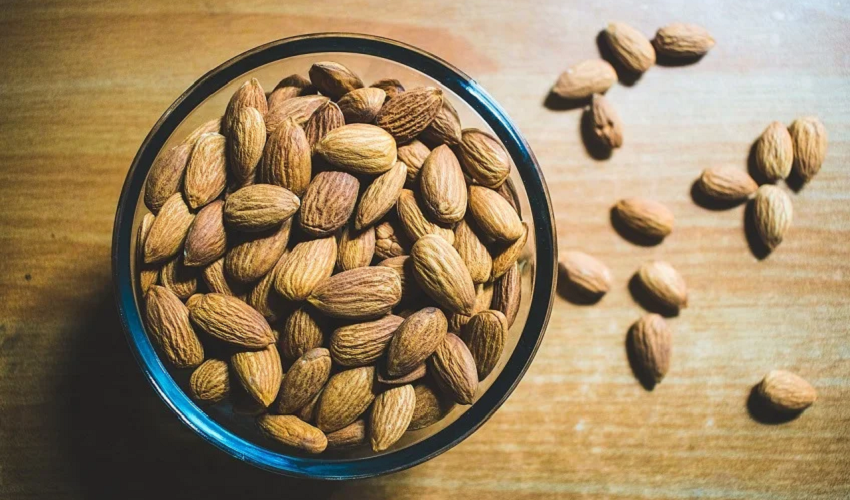Living with diabetes requires careful management of diet and lifestyle choices. For individuals with diabetes, maintaining a healthy weight is crucial for overall well-being and effective blood sugar control. In this article, we will explore evidence-based strategies for healthy eating that can support weight management in individuals with diabetes. By incorporating these strategies into daily life, diabetic patients and their caregivers can improve their health outcomes and lead fulfilling lives.
Understanding the Importance of Weight Management in Diabetes
The relationship between weight and diabetes
Excess body weight is strongly linked to the development of type 2 diabetes. Research has shown that individuals who are overweight or obese have a higher risk of developing diabetes compared to those with a healthy weight. This is because excess weight can lead to insulin resistance, making it harder for the body to effectively use insulin to control blood sugar levels.
Health benefits of weight management in diabetes
- Reducing insulin resistance: Losing weight can improve insulin sensitivity, allowing the body to use insulin more effectively and maintain stable blood sugar levels.
- Lowering the risk of complications: Weight management plays a crucial role in preventing or managing complications associated with diabetes, such as heart disease, high blood pressure, and nerve damage.
- Improving cardiovascular health: Maintaining a healthy weight can reduce the risk of cardiovascular problems, including heart attacks and strokes, which are more common in individuals with diabetes.
Building a Balanced Diabetes-Friendly Diet
Macronutrients and their role in diabetes
- Carbohydrates and blood sugar control: Carbohydrates have the most significant impact on blood sugar levels. Choosing complex carbohydrates, such as whole grains, legumes, and vegetables, over refined carbohydrates can help regulate blood sugar levels more effectively.
- Proteins for satiety and muscle maintenance: Including lean sources of protein, such as poultry, fish, tofu, and legumes, in meals can promote feelings of fullness and help maintain muscle mass, which is important for overall metabolic health.
- Healthy fats for heart health: Opting for sources of healthy fats, such as avocados, nuts, seeds, and olive oil, can provide essential nutrients and promote heart health. It’s important to moderate the intake of fats due to their high caloric content.
Incorporating nutrient-rich foods into the diet
- Whole grains and their benefits: Whole grains, such as quinoa, brown rice, and whole wheat bread, provide fiber, vitamins, and minerals. They have a lower impact on blood sugar levels compared to refined grains, making them a better choice for individuals with diabetes.
- Lean sources of protein: Choose lean protein options like skinless poultry, fish, eggs, and plant-based proteins like tofu and legumes. These protein sources are lower in saturated fat, which is beneficial for heart health.
- The importance of fruits and vegetables: Fruits and vegetables are packed with vitamins, minerals, and fiber. They are low in calories and high in nutrients, making them an essential part of a diabetes-friendly diet.
- Nuts, seeds, and healthy fats: Including small portions of nuts and seeds, such as almonds, walnuts, chia seeds, and flaxseeds, can provide healthy fats, fiber, and essential nutrients. However, moderation is key due to their high caloric content.
Table 1: Examples of Low and High Glycemic Index (GI) Foods
| Low GI Foods | Medium GI Foods | High GI Foods |
|---|---|---|
| Quinoa | Basmati rice | White bread |
| Steel-cut oats | Sweet potato | White rice |
| Lentils | Whole wheat bread | Corn flakes |
| Chickpeas | Pineapple | Watermelon |
| Berries | Honey | White potatoes |
Table 2: Examples of Healthy Substitutions for Weight Management
| High-Calorie Food | Healthier Substitution |
|---|---|
| Soda | Sparkling water with a squeeze of lemon or lime |
| French fries | Oven-baked sweet potato fries |
| Ice cream | Greek yogurt with fresh berries |
| Potato chips | Air-popped popcorn |
| Fried chicken | Grilled or baked chicken breast |
Table 3: Recommended Daily Calorie Intake for Weight Management
| Gender | Age Group | Sedentary Lifestyle | Moderately Active Lifestyle | Active Lifestyle |
|---|---|---|---|---|
| Female | 19-30 years | 1,800-2,000 calories | 2,000-2,200 calories | 2,400 calories |
| 31-50 years | 1,800-2,000 calories | 2,000-2,200 calories | 2,200 calories | |
| 51+ years | 1,600-1,800 calories | 1,800-2,000 calories | 2,200-2,400 calories | |
| Male | 19-30 years | 2,200-2,400 calories | 2,400-2,800 calories | 3,000 calories |
| 31-50 years | 2,000-2,200 calories | 2,200-2,600 calories | 2,800 calories | |
| 51+ years | 2,000-2,200 calories | 2,200-2,400 calories | 2,400-2,800 calories |
Portion Control and Meal Planning
Understanding portion sizes
- Recommended serving sizes: Familiarize yourself with recommended serving sizes to avoid overeating. Use measuring cups, spoons, and food scales to accurately portion out foods.
- Measuring and estimating portions: When measuring tools are not available, use visual cues to estimate portion sizes. For example, a serving of meat should be about the size of a deck of cards.
Meal planning for diabetes and weight management
- Importance of regular meals and snacks: Eating regular, balanced meals throughout the day helps maintain stable blood sugar levels and prevents overeating. Include healthy snacks, such as vegetables with hummus or a small handful of nuts, to curb hunger between meals.
- Balancing carbohydrates, proteins, and fats: Create balanced meals by incorporating carbohydrates, proteins, and healthy fats. Aim for a variety of foods to ensure adequate nutrient intake.
- Creating a plate with the right proportions: Visualize your plate divided into sections: half filled with non-starchy vegetables, one-quarter with lean protein, and one-quarter with whole grains or starchy vegetables. Add a small serving of healthy fats, such as olive oil or avocado.
Glycemic Index and Glycemic Load
Explaining the glycemic index (GI) and glycemic load (GL)
- Definition and concepts: The glycemic index measures how quickly carbohydrates in food raise blood sugar levels. The glycemic load takes into account both the quality and quantity of carbohydrates in a serving of food.
- Impact on blood sugar levels: Choosing low GI and GL foods can help prevent rapid spikes in blood sugar levels. However, it’s important to note that the glycemic index should not be the sole factor in meal planning. Consider overall carbohydrate content and portion sizes.
Using the glycemic index in meal planning
- Choosing low GI foods: Incorporate low GI foods such as whole grains, legumes, non-starchy vegetables, and most fruits into your diet. These foods have a gentler impact on blood sugar levels.
- Combinations of low and high GI foods: Pairing high GI foods with low GI foods can help moderate the overall glycemic response. For example, combining a high GI food like white rice with fiber-rich vegetables can lower its impact on blood sugar levels.
Managing Caloric Intake for Weight Control
Understanding calorie needs
- Factors affecting caloric requirements: Individual calorie needs depend on factors such as age, gender, weight, activity level, and overall health. Working with a registered dietitian can help determine personalized calorie goals.
- Calculating calorie needs: Use online calculators or consult with a healthcare professional to estimate your daily calorie needs for weight management. Remember that calorie needs may vary for individuals with diabetes due to factors such as insulin use and medication.
Strategies for reducing calorie intake
- Mindful eating and portion awareness: Practice mindful eating by paying attention to hunger and fullness cues. Avoid distractions while eating, and savor each bite. Additionally, be aware of portion sizes to prevent excessive calorie intake.
- Substituting high-calorie foods with healthier options: Make healthier substitutions, such as replacing sugary beverages with water, choosing baked or grilled foods instead of fried options, and opting for low-fat dairy products.
- Managing snacking habits: Choose nutrient-dense snacks, such as Greek yogurt, raw vegetables with hummus, or a handful of almonds. Be mindful of portion sizes and avoid mindless snacking.
Practical Tips for Healthy Eating in Diabetes
Reading food labels: Learn how to read and understand food labels to identify added sugars, unhealthy fats, and high sodium content. Pay attention to serving sizes and aim for foods with minimal processing.
Cooking methods for healthier meals: Choose cooking methods that require minimal added fats, such as grilling, steaming, baking, or sautéing with small amounts of olive oil. Limit the use of processed and deep-fried foods.
Hydration and the role of water: Stay hydrated by drinking plenty of water throughout the day. Limit sugary beverages and choose water as the primary source of hydration.
Limiting added sugars and sugary beverages: Reduce the intake of foods and drinks with added sugars, such as sodas, fruit juices, candies, and desserts. Opt for naturally sweetened options like fresh fruits.
The importance of regular physical activity: Incorporate regular physical activity into your daily routine, as it plays a vital role in weight management and overall health. Engage in activities you enjoy, such as walking, cycling, swimming, or dancing.
Effective weight management is a critical aspect of diabetes care. By following the healthy eating strategies discussed in this article, individuals with diabetes can achieve and maintain a healthy weight, improve glycemic control, and reduce the risk of complications. It is essential to work with healthcare professionals, such as registered dietitians, to develop personalized meal plans and make dietary changes that are suitable for individual needs. By taking proactive steps towards a healthy lifestyle, individuals with diabetes can enjoy a better quality of life and improved overall well-being.




